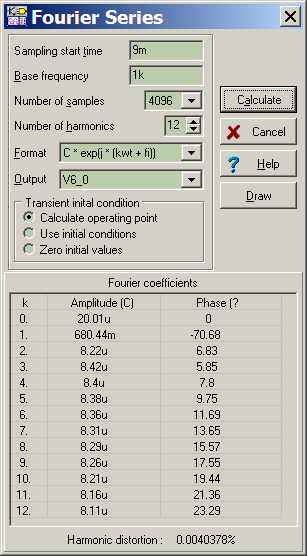Hello
I have Tina-Ti, with all types of analogs circuits simulations, wen I use the Fourier Series analysis it give wrong values since it give mostly between 7% and 50% of distortions reading, I did compared those distortions numbers of my circuits by making prototypes using my HP distortion analyser and the number are a allways under .01% of distortion with my HP.
I include an image of test circuit on Tina-Ti.
Do I made any errors in my use of the Fourier Series ?
A helps are welcome.
Thank you
Bye
Gaetan




